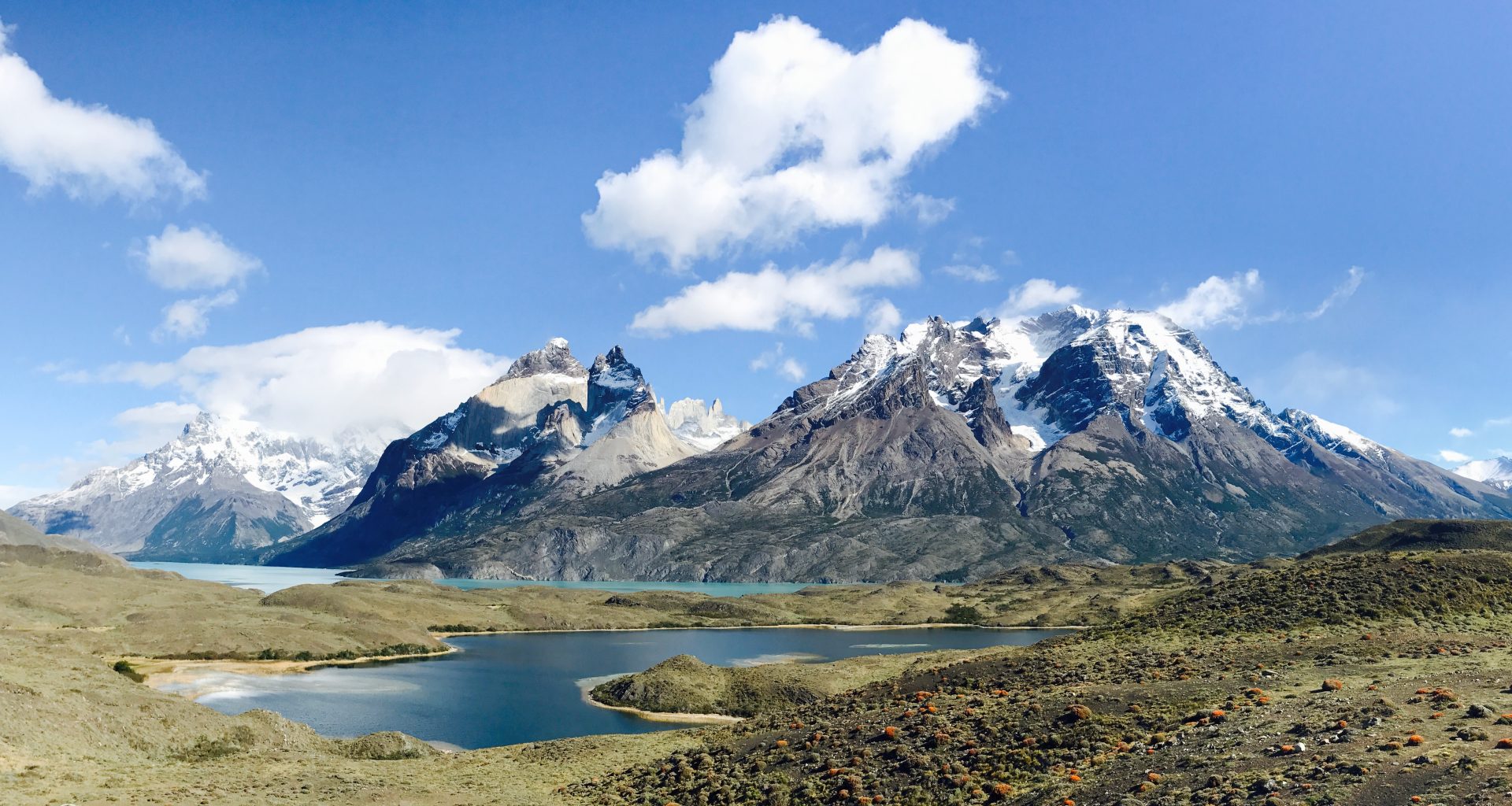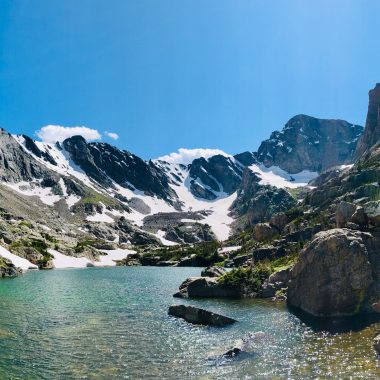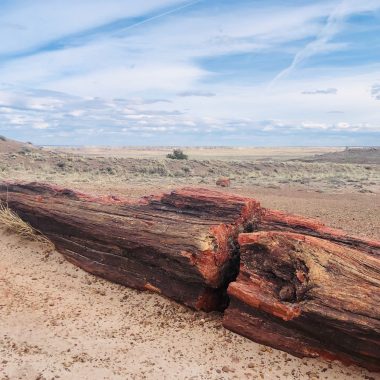W Trek en Torres del Paine
It’s hard to convey the majesty and breathtaking beauty of the Paine Massif, the mountain range which anchors the heart of Torres del Paine National Park in Chile. The mountains’ dramatic horns, aretes, and cirques twist in every direction, flexing to an almost psychedelic geologic effect. To make things even more dramatic, the Massif is framed at its base by the aqua blue glacial waters of Lake Pehoe. For those making the nearly 24 hour air and overland journey to get here, Torres del Paine does not disappoint.

I made the journey to Patagonia to complete the famous W-Trek, a forty mile hike into the heart of the Paine mountain range. Getting here is no easy feat. From most points in North America, it’s a 10-12 hour flight to Santiago, Chile, then another three hour flight to Punta Arenas before traveling overland for 4-5 hours to reach the park. Once in Punta Arenas, my travel companion, Jeremy, and I let the ground team at Cascada Expediciones take the wheel and transport us out to what would be our home base at Ecocamp Patagonia for five days.
Cueva del Milodón
We were fortunate to have some extra time en route to Torres del Paine and got to stop at Cueva del Milodón Natural Monument, a large natural cave about 15 miles north of Puerto Natales. A short hike takes you deep into the 660 ft long cave, in which the remains of its namesake Mylodon, a long extinct large ground sloth, were found when the cave was first discovered in the late 1800’s.

Guanacos!
Once inside Torres del Paine National Park, the first wildlife you’re likely to encounter are Guanaco, a lamoid that is closely related to Alpaca and Llamas. They are everywhere here. Have your camera ready if you want a photo, because guanaco are fast, capable of running at speeds of up to 35mph, second only to pumas in this area.

EcoCamp
After a short drive through the park, we arrived at EcoCamp, an outpost of geodesic domes situated at the base of the Paine Massif, near the trail head to Torres Del Paine. EcoCamp is one of many accommodation options for trekkers here. There are simple Refugios, tent camping options, or more upscale accommodations like EcoCamp. Given the logistical complexity and sparse services, we opted for the all-inclusive option at EcoCamp- with all transportation, food, acommodations, and trekking guides provided by Cascada.

The towers of Torres Del Paine can be seen in the distance from the base at EcoCamp. Some trekkers start the W-Trek with the eastern most leg of the “W”, a 14 mile hike to the base of the towers. For our group, this would be the grand finale of our trek. Having arrived in the early-evening, we settled in our dome and waited for what would be one of the highlights of the EcoCamp experience, dinners with fellow trekkers! EcoCamp does a lot of things well–rustic but luxurious accommodations, excellent logistical support, and friendly staff–but their ability to deliver delicious, healthy, high end cuisine each night was a highlight of the trip. The food here is good-really, really good. They also pour an unlimited amount of Chilean wine, which you get to happily burn off on the 10+ mile hikes that make up each day of the W-Trek.

French Valley
On day two, we started the W-Trek from the middle leg of the “W”, a 14-mile hike into the French Valley. To get to the trailhead, you travel by boat across Lake Pehoe to Refugio Paine Grande. The trail leaves the shores of Lake Pehoe and traverses across Patagonian grassland before following the French River into the heart of the Massif.
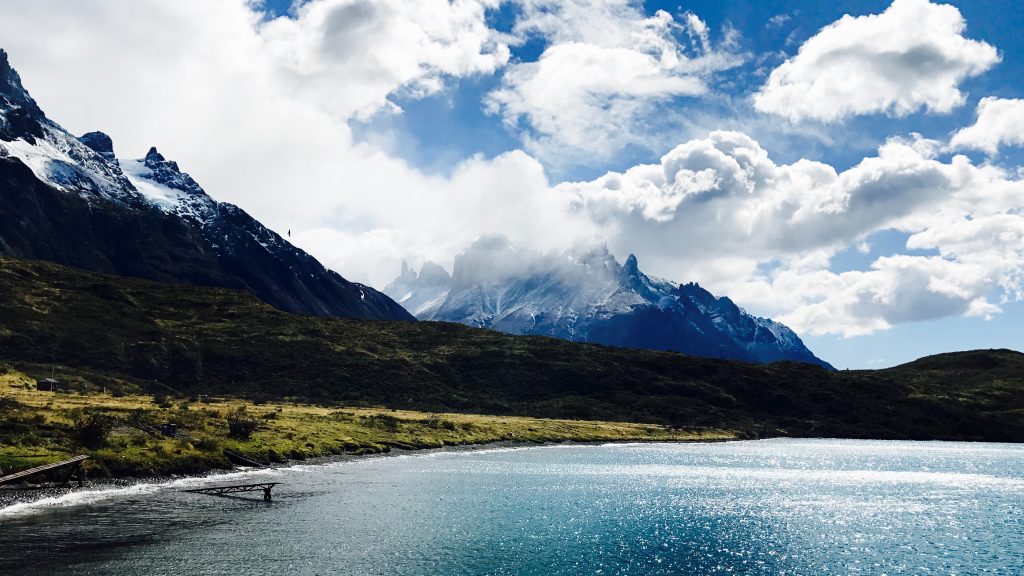
Few places on earth bring land, water, and sky together in as compelling a scene as this side of Patagonia does. It’s magnetic, pulling on your heart and mind–and your feet–to move closer to it all. 14 miles feels like a breeze when you’re immersed in this kind landscape. You just want to take it all in.

Refugio Paine Grande
On our return, we were slated to stay the night at the Refugio Paine Grande. The refugio offers simple accommodations, with shared bunk rooms, and a cafeteria style food arrangement. After 14-miles on our feet, a simple warm meal and bed were more than welcome sights. We wrapped up the night by 9pm, excited for the next leg of the trek to Lago Grey and Grey Glacier.
Lago Grey

The refugio was bustling with activity the next morning. Trekkers from all over the world make the pilgrimage here to this natural mecca. Our group had trekkers from all corners of the US, the UK, and the Netherlands. It’s hard not to get to know your fellow travelers here, given the long days of walking and talking along the route. I’m pleased to say that I’ve kept in touch with several members from our group since the trip.

The Lago Grey hike is the shortest leg of the W-trek, traversing 9-miles from the Refugio to the shores of Lago Grey. From there, you board a boat that takes you to the mouth of the Grey Glacier.

The layers of water, glacial ice, rocks, and jagged peaks all weave together here for spectacular effect. Getting to relax on the boat after a combined 23 miles of hiking in two days was a welcome break. After a loop on the lake, the boat returned us to shore and a waiting Cascada van to return us to EcoCamp for the night.
Torres del Paine
I woke up pretty sore on the final day of the trek, which made this the most challenging leg of the trip. The hike to the towers is 14+ miles with about 2400 feet of elevation gain. Could I make it all the way given my legs and feet felt like they had been beaten by a metal pipe? The Dutch family in our group decided this last day was a no-go for them, but I was determined to make it–you don’t come all this way and NOT go to the towers!
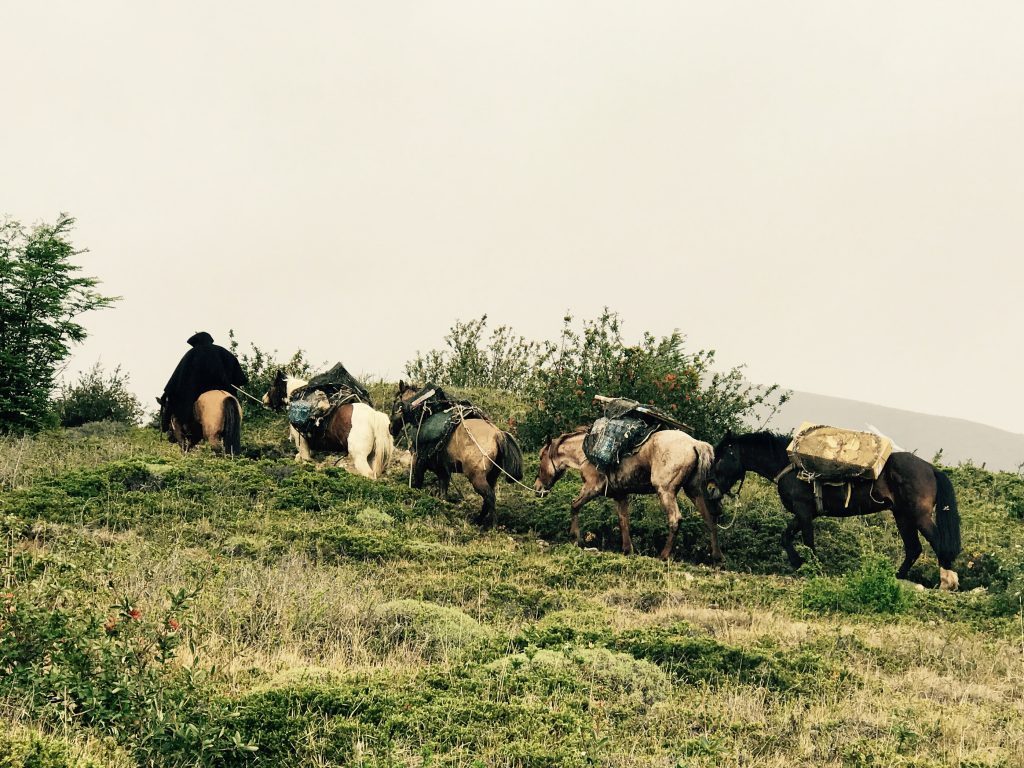
Right after we set off for the towers we encountered a gaucho guiding some trail horses along the route. If you’re worried about the long distances of the W-Trek, the estancias (horse ranches) in Patagonia can be hired out to take you by horseback for portions of the trek. In the case of the towers leg, a horseback option will get you about half way up the trail. From there you’re on your own to complete the last steep, rocky section. We would have no such luxury this trip, but I would definitely consider it next time.
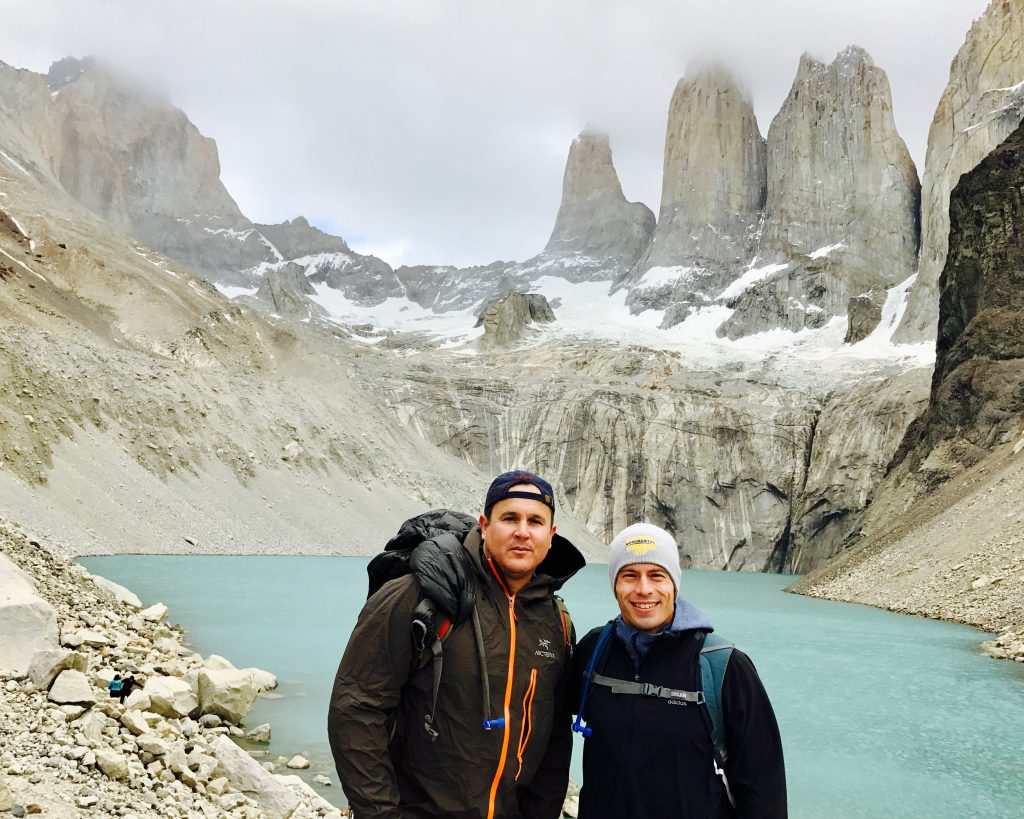
It took about 4-5 hours, and a lot of trail snacks to make it, but make it we did. The three granite towers, cut by eons of glacial erosion, were an awe-inspiring sight. Being there was surreal and one of the all-time highlights from my travels around the globe. Fortunately, because of the terrain, it literally is all downhill from the Towers back to EcoCamp. We made our way down the trail, motivated by the thought of a chef-cooked meal, Chilean wine, and friendly dinner conversations waiting for us back at camp.
